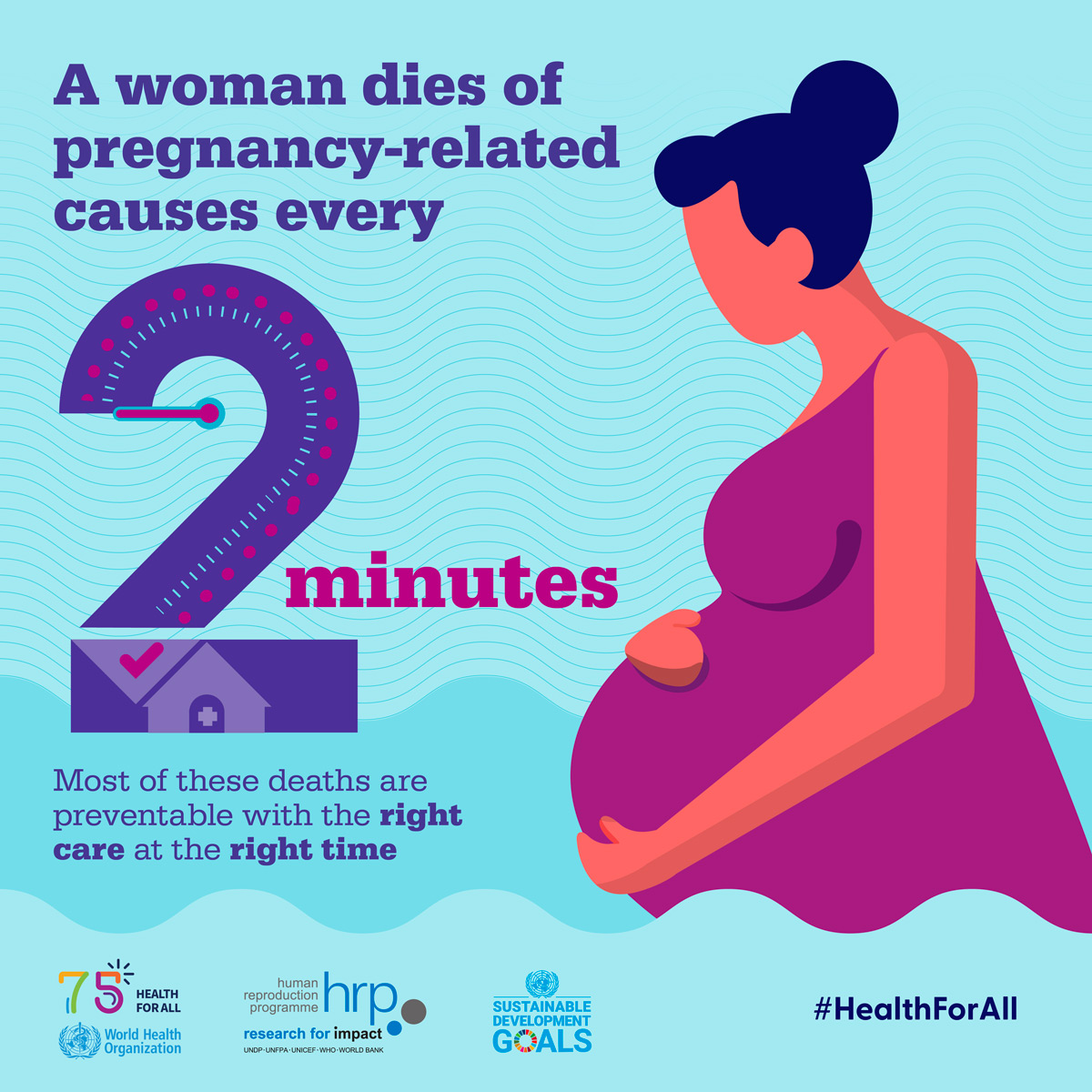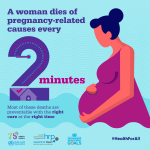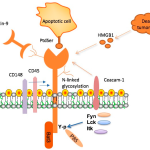Maternal mortality remains a pressing issue in the United States, highlighting critical challenges in ensuring the safety of pregnancy and childbirth. As one of the highest among high-income countries, the maternal mortality rate is not merely a statistic; it reflects systemic healthcare disparities that contribute to pregnancy-related deaths and inadequate postpartum care. Alarmingly, over 80% of these deaths are preventable, underscoring the need for comprehensive solutions in maternal health. Despite advancements, significant racial and state-level disparities persist, indicating that urgent action is necessary to address these inequalities. Increasing awareness and investment in effective prenatal care can potentially reduce maternal mortality and safeguard the well-being of mothers nationwide.
The discussion surrounding maternal fatalities sheds light on the broader issues of pregnancy complications and the alarming rise in maternal deaths experienced across various demographics. Related terms such as perinatal health and pregnancy-associated fatalities reveal the urgent need for improved maternal care systems. Factors contributing to these fatalities include chronic health conditions and healthcare inequities that disproportionately affect marginalized communities. It is crucial to broaden the lens through which we examine these crucial public health concerns, particularly emphasizing the importance of equitable access to quality healthcare during pregnancy and the postpartum period. This inclusive approach can help drive significant changes to improve maternal health outcomes and reduce preventable deaths.
Understanding Maternal Mortality in the U.S.
Maternal mortality in the United States has reached alarming levels, positioning the nation as the leader in maternal deaths among high-income countries. This troubling trend suggests systemic issues within the healthcare framework, particularly affecting marginalized communities. Notably, over 80 percent of these deaths are deemed preventable, highlighting a significant gap in the accessibility and quality of maternal healthcare. The increasing mortality rates from 2018 to 2022 reflect disparities that are deeply rooted in socioeconomic factors, healthcare policies, and geographical inequalities.
The latest report indicates that American Indian and Alaska Native women are facing the highest maternal mortality rates, which are almost four times higher than their white counterparts. This stark contrast underscores the critical need for targeted interventions focused on reducing healthcare disparities and improving maternal health outcomes for all women. Understanding the nuances of maternal mortality, including the factors contributing to these preventable deaths, is essential for fostering a better healthcare system that prioritizes both equity and quality care.
This rise in maternal mortality has not only been attributed to underlying health conditions like cardiovascular diseases but also to systemic inequalities that persist across the country. Addressing these issues hinges on a holistic understanding of the factors contributing to pregnancy-related deaths, including chronic health conditions prevalent among women of reproductive age. The complexity of resources available to women in different states signifies the importance of targeted, localized solutions that can address the unique challenges faced by various communities.
With an emphasis on improving maternal health, it’s imperative to invest in research and public health initiatives that focus on tracking maternal outcomes. This is particularly crucial in a landscape where the lack of a unified system to monitor maternal deaths has resulted in incomplete data and ineffective policy responses. Taking steps to create awareness about the factors leading to maternal mortality can empower policy change and improve health services that cater to the needs of expectant mothers.
The Role of Postpartum Care in Reducing Preventable Deaths
Postpartum care is a crucial component of maternal health, yet it often receives insufficient attention in the healthcare landscape. Many women assume that their health concerns dissipate once the pregnancy concludes, but in reality, the postpartum period is critical for monitoring and addressing any complications that may arise. The World Health Organization’s traditional definition of maternal mortality notably excludes late maternal deaths, which can occur up to a year after childbirth, highlighting a significant gap in comprehensive care practices. Given that nearly a third of pregnancy-related deaths happen after the initial postpartum period, a reevaluation of how postpartum care is perceived and implemented is essential.
Extending postpartum care beyond the traditional six-week check-up can help healthcare providers identify and manage conditions such as hypertension and cardiovascular diseases, which are leading causes of maternal mortality. By understanding that postpartum recovery is a continuum rather than a defined end point, healthcare systems can better support women’s health and wellbeing during this critical time. Improved postpartum services can ultimately lead to fewer preventable deaths, as comprehensive care can address emerging postpartum complications more effectively.
An emphasis on postpartum care requires not only investment in healthcare services but also policy reforms to ensure that women have access to necessary resources and information. Healthcare providers must be equipped to offer ongoing support, education, and resources that recognize the multifaceted nature of postpartum recovery. Such initiatives could help mitigate the health disparities observed across different demographics, fostering an inclusive approach to maternal health that prioritizes the needs of all women.
Furthermore, integrating mental health services into postpartum care is pivotal for addressing the psychological challenges that many women face after childbirth. Conditions like postpartum depression can significantly impact a woman’s recovery, yet they often go unrecognized in traditional maternal health assessments. By creating more robust postpartum care frameworks that encompass both physical and mental health, the healthcare system can not only reduce maternal mortality rates but also improve overall maternal health outcomes.
Healthcare Disparities: A Barrier to Maternal Health
Healthcare disparities significantly hinder efforts to reduce maternal mortality in the United States. These disparities are evident in how different racial and ethnic groups experience pregnancy and postpartum care. American Indian, Alaska Native, and non-Hispanic Black women encounter markedly higher rates of pregnancy-related deaths compared to their white counterparts. Factors contributing to these inequities include limited access to quality healthcare, economic instability, and sociocultural barriers that affect engagement with maternal health services.
Addressing healthcare disparities requires a multifaceted approach, including policy reforms aimed at creating equitable healthcare systems. Efforts should be made to expand access to comprehensive prenatal and postpartum services, particularly in rural or underserved areas, often referred to as maternity care deserts. Collaborative initiatives involving community health organizations can bridge gaps in care, ensuring that all women receive timely assistance and support throughout their pregnancy journey.
Moreover, promoting awareness and education around maternal health issues within communities can empower individuals to advocate for their health and wellbeing. By equipping women with knowledge about their rights and available healthcare services, communities can foster environments where patients feel supported and valued. Collaboration between policymakers, healthcare providers, and community advocates is essential to dismantle systemic barriers and create a more equitable landscape for maternal healthcare.
Investments in culturally competent care are critical in addressing the specific needs of diverse populations. This involves training healthcare providers to recognize and mitigate biases that may affect patient interactions, leading to a more inclusive healthcare environment. By prioritizing healthcare equity, we can work toward significantly lowering maternal mortality rates and ensuring that every woman receives the high-quality care she deserves.
Innovative Solutions to Enhance Maternal Health Outcomes
Innovation in maternal healthcare is vital for reversing the troubling trend of rising maternal mortality rates. Creative solutions that leverage technology and community engagement can enhance access to key services throughout pregnancy and beyond. For example, telehealth options can provide crucial prenatal and postpartum consultations, particularly for women living in remote areas. By utilizing digital platforms, healthcare providers can offer timely assessments and support, ensuring that women have access to necessary resources regardless of their geographic location.
Additionally, implementing mobile health applications can facilitate better communication between expectant mothers and healthcare teams. These tools can help track health metrics, remind women of important appointments, and provide educational resources to better understand pregnancy and postpartum care. With a focus on patient-centered care, these innovations can empower women to take charge of their health while also optimizing the quality of care they receive.
Furthermore, community-based programs that promote maternal health awareness can drive positive change by encouraging peer support and resource sharing. Initiatives that train community health workers to understand the challenges specific populations face can lead to tailored outreach efforts. These programs can address not only physical health needs but also social determinants of health that contribute to maternal mortality, ultimately reducing preventable deaths in the process.
The integration of innovative solutions into existing frameworks can bridge the gaps within maternal health services. Policymakers should prioritize funding for initiatives that aim to improve access and quality of care while fostering partnerships between healthcare providers and community organizations. By fostering a collaborative ecosystem, we can promote maternal health as a priority and work toward significantly reducing issues related to pregnancy-related deaths.
The Importance of Tracking Maternal Deaths Effectively
Accurate tracking of maternal deaths is crucial for understanding the landscape of maternal health and developing effective interventions. The lack of a consistent national system for recording maternal deaths has resulted in significant gaps in data, making it difficult to assess the true extent of the problem. Since the implementation of the pregnancy checkbox on death certificates in 2018, there has been a shift toward better data collection; however, challenges remain in ensuring that all states adhere to these practices consistently. Improved tracking can reveal essential insights into when and why maternal deaths occur, guiding targeted policy changes.
Furthermore, comprehensive data collection not only highlights existing disparities but also helps in evaluating the effectiveness of interventions aimed at reducing maternal mortality. By analyzing trends over time, researchers can identify patterns that necessitate immediate attention, such as rising rates among specific demographics or regions. This data-driven approach can inform best practices while allowing healthcare providers to allocate resources where they are most needed.
Moreover, improving the tracking process supports accountability within the healthcare system. Stakeholders can utilize this data to monitor progress toward established maternal health goals and advocate for necessary changes. Regularly updated statistical insights can empower communities to engage in meaningful dialogues about maternal health, pushing for reforms that address systemic issues leading to high maternal mortality rates. Therefore, enhancing data collection methods is integral to building a robust national strategy aimed at improving maternal health outcomes.
Ultimately, effective tracking of maternal deaths is a step toward transparency and progress in addressing maternal health challenges. It sets a foundation for continuous improvement through research and policy adaptation, ensuring that efforts to reduce maternal mortality are both evidence-based and driven by the real needs of mothers across various communities.
Innovative Policy Levers to Combat Maternal Mortality
Addressing maternal mortality in the U.S. requires the implementation of innovative policy levers designed to enhance maternal health outcomes. These policies should focus on expanding access to quality healthcare, particularly in underserved areas where maternal health resources may be limited. Each state can learn from successful models, like California, which has seen dramatic improvements in maternal health outcomes by investing in quality care and comprehensive support systems. Policymakers ought to take a geographical approach, tailoring solutions to meet the unique needs of communities, and crafting initiatives that consider the socioeconomic factors impacting maternal health.
Investment in education and training for healthcare providers is also imperative, as more informed providers can better recognize the warning signs of conditions that contribute to maternal deaths. Beyond clinical training, fostering cultural competence and understanding the social determinants of health can empower healthcare professionals to address challenges faced by diverse populations effectively. Continuous improvement through professional development can lead to a more responsive healthcare workforce equipped to provide high-quality care to all women.
Additionally, public health campaigns aimed at raising awareness about maternal health are essential for driving community engagement. Through programming that targets preventative measures, advocacy for women’s health, and information dissemination, communities can actively participate in combating maternal mortality. Such initiatives empower women to proactively seek the care they need while ensuring they understand their health rights and available resources.
By prioritizing maternal health-focused policies and engaging various stakeholders, including healthcare providers, community advocates, and policymakers, we can create a more equitable maternal healthcare landscape. This concerted approach is critical for reducing disparities in maternal mortality rates, ensuring that every woman receives the necessary care before, during, and after pregnancy.
Preventing Maternal Mortality Through Comprehensive Care
Comprehensive care models play a vital role in preventing maternal mortality and improving health outcomes for women. This approach incorporates a continuum of care that spans from preconception to postpartum, recognizing the importance of addressing health needs at every stage. Effective prenatal care, access to delivery services, and robust postpartum support are all fundamental components of a system designed to mitigate risks associated with pregnancy-related deaths. Investments in these areas can lead to better health monitoring and proactive identification of health concerns before they escalate.
In addition to medical care, comprehensive support systems should address emotional and social factors that influence maternal health. Mental health services must be integrated into maternal healthcare strategies, as conditions like postpartum depression can significantly impact a woman’s recovery and overall wellbeing. By creating an environment where mental health is prioritized alongside physical health, healthcare systems can offer holistic support that fosters recovery and empowerment.
Furthermore, encouraging collaborative care models that engage interdisciplinary teams can enhance the quality of maternal healthcare. Involving physicians, nurses, social workers, and mental health professionals in care planning ensures that a woman’s diverse needs are met in a coordinated manner. This comprehensive approach minimizes the risk of preventable deaths by offering tailored, multifaceted interventions designed for specific populations.
Ultimately, fostering a culture of comprehensive care requires a commitment to prioritizing maternal health at all levels of the healthcare system. By recognizing the interconnectedness of physical and mental health, and the importance of supportive services, we can work toward reducing maternal mortality rates and ensuring that mothers receive the care and support they need throughout their pregnancy journey.
Frequently Asked Questions
What are the main causes of maternal mortality in the U.S.?
The leading causes of maternal mortality in the U.S. include cardiovascular diseases, hemorrhage, and complications due to chronic health conditions. Cardiovascular issues, especially hypertensive disorders, account for over 20% of pregnancy-related deaths, reflecting a significant health concern for women during and after pregnancy.
How do healthcare disparities contribute to maternal mortality rates?
Healthcare disparities significantly contribute to maternal mortality rates by creating unequal access to quality care and resources across different racial and ethnic groups. These disparities can lead to higher pregnancy-related deaths for marginalized communities, particularly among American Indian and Alaska Native women, highlighting the need for equitable healthcare policies.
What role does postpartum care play in reducing maternal mortality?
Postpartum care is crucial in reducing maternal mortality as many pregnancy-related deaths occur after childbirth, often between 42 days and one year. Enhancing postpartum healthcare services ensures that women receive continuous support and management of health issues that may arise following delivery, potentially decreasing preventable deaths.
How can we address the rising trend in pregnancy-related deaths in the U.S.?
To address the rising trend in pregnancy-related deaths, it is essential to invest in public health infrastructure, improve prenatal care, and extend postpartum care. Innovative solutions and policy reforms that ensure equitable access to quality healthcare can help lower maternal mortality rates across all demographics.
Why is the U.S. maternal mortality rate higher than that of other high-income countries?
The U.S. maternal mortality rate is higher than that of other high-income countries due to several factors, including a fragmented healthcare system, systemic inequalities, and the prevalence of chronic health conditions among women of reproductive age. These issues contribute to inadequate maternity care and elevated risks during pregnancy and childbirth.
What impact did the COVID-19 pandemic have on maternal mortality rates?
The COVID-19 pandemic significantly impacted maternal mortality rates, with a notable increase in deaths occurring during the initial years of the pandemic. Research indicates a sharp rise in pregnancy-related deaths in 2021, which may be linked to the disruptions in healthcare access and increased health challenges faced by pregnant individuals during this period.
How important is it to track late maternal deaths in understanding maternal mortality?
Tracking late maternal deaths, defined as those occurring between 42 days and one year following pregnancy, is critical for understanding the full scope of maternal mortality. Recognizing these deaths as part of maternal health allows for better healthcare planning and policy interventions that can address the continuous health needs of postpartum women.
What can be done to reduce preventable deaths associated with maternal mortality?
To reduce preventable deaths linked to maternal mortality, it is vital to enhance healthcare access, improve the quality of maternal care throughout pregnancy and the postpartum period, and address the social determinants of health. Efforts should focus on reducing disparities and ensuring that all women receive comprehensive care tailored to their needs.
| Key Point | Details |
|---|---|
| Maternal Mortality Rate | The U.S. has the highest maternal mortality rate among high-income countries, which rose from 25.3 in 2018 to 32.6 deaths per 100,000 live births in 2022. |
| Preventable Deaths | More than 80% of pregnancy-related deaths are preventable, emphasizing the need for better healthcare services. |
| Racial Disparities | There are significant disparities in maternal mortality rates, with American Indian and Alaska Native women experiencing the highest rates (106.3 deaths per 100,000). Non-Hispanic Black women also face higher rates compared to white women. |
| Leading Causes | Cardiovascular disease is now the leading cause of pregnancy-related death, accounting for over 20% of all deaths. |
| COVID-19 Impact | The onset of the COVID-19 pandemic coincided with a sharp increase in maternal mortality rates, particularly in 2021. |
| Postpartum Care | Late maternal deaths (42 days to 1 year postpartum) accounted for nearly a third of total deaths, highlighting the need for extended postpartum care. |
| Need for Policy Changes | Investing in public health infrastructure and addressing policy variations between states is crucial for improving maternal health outcomes. |
Summary
Maternal mortality remains a critical issue in the United States, with alarmingly high rates compared to other high-income countries. The persistent rise in maternal mortality reflects systemic issues within the healthcare system, including disparities across racial and ethnic lines, and the need for comprehensive care throughout pregnancy and the postpartum period. Addressing these challenges through policy reform and investment in healthcare infrastructure is essential to protect the lives of mothers and improve maternal health outcomes.










